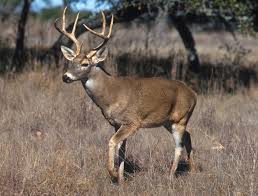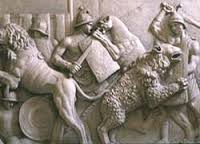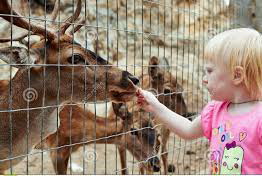Ecological Fabric
On Seasonal Round Activities
of the
Schitsu'umsh and
the Nimíipuu Communities
With
the landscape prepared by the First Peoples, embedded with the "gifts"
(mi'yep and
súumesh =
"the bones") and with Animal and Plant Peoples,
and we
the Human Peoples, in our baaéechichiwaau, perpetuating the health of the
"the family," of landscape for all Peoples,
how do we understand and apply
those teachings and powers to help the Plant and
Animal Peoples, the landscape itself?
How are we to relate
to our Animal and Plant Kinsmen? How do we
relate to the "natural world"?
What is a healthy environment?
What accounts for an affluent society?
Videos: Makuna Consent
(23 min., notes on
Makuna Consent) and
Gabra Finn
(15 min., notes on
Gabra
Finn) are part of the
Millennium
series.
(Compare with story of Sedna and
Schitsu'umsh camas gathering and deer hunting)
-
Definition of "landscape" -- the way a people have conceptualized the
phenomena of their environment (lakes, rivers, mountains, animals, plants and fish),
investing that phenomena with cultural significance and meaning. A "landscape"
transcends its material properties and resides in the symbolic meaning it has for a
people. Hence a "landscape" can entail phenomena that is fundamentally
aesthetic, affective, moral, spiritual, as well as economic and political in nature.
-
A couple of forms of
anthropological, social science research focusing in human/landscape
relations are called,
"Ethnobotany"
and
"Traditional Ecological Knowledge" (TEK),
both exemplified in the following images from
the
Schitsu'umsh
(Coeur d'Alene Indians) uses and meaning of "camas" and "water potato."

-
Indigenous herding (e.g.,
Nuer)
-
Indigenous horticultural (e.g.,
hoe
technology) On origins of
agriculture, see Story
of Jericho
(domestication, stratification, energy consumption, and
population growth)
-
Global Agricultural (e.g.,
plow
technology)


Domestication, Horticulture and Agriculture:
the contrast with Gatherer - Hunter ecology
Story of Jericho - 9,400 years ago: a metaphor of domestication
and its long-range implications, and demarcation from the Indigenous.
Why were the
walls and tower
of Jericho built? And what where their long-term implications?
reflective
write
-
Why humanity
domesticated plants is still shrouded in scientific mystery, as
many theories predominate and the evidence is clouded.
Archaeologists do know that domestication of plants was pursued by the
gatherer-hunter Natufians and people of Jericho
(some 10,000 years ago) as an unintentional, secondary strategy for survival in a "ghetto"
gatherer-hunter zone, all predicated on a number of unique precursor conditions
first occurring. Initial "domestication" of plants was not an
inevitable and obvious adaptive strategy, with advantages over
gatherer-hunter strategies. Review
Story of Jericho
(reading)
Domestication is predicated on and leads to the
defining characteristics of an
agricultural as well as technological ecology.
Higher ratio of technological control and energy application over the
landscape (than in gatherer-hunter, herding or horticultural ecologies), as
exemplified
in the use of the plow, resulting in
greater yield of crop per
capita of land.
A sedentary life-style -
cities and urbanization.
Task specialization, differential access to resources, social
stratification
into classes, and centralization of political
and economic power.
Manipulation of and control over a what is
now called a "natural species" -- creating a "domestic"
from what now is considered a "wild" plant ("weed").
A symmetrical relationship of mutual dependency between newly domesticated plant/animal
and human -- each dependent on the other for its survival.
Example of
teosinte, to maize, to corn.
Necessitates and eventually leads to rapid
growth in human
population
-
population explosion
-
an enormous human labor input is required, though low level of productivity per unit of
human labor results -- you need a lot of labor (thus placing demands
in increased population levels)
-
but a high aggregate crop productivity per unit of land also results -- you are able to
produce a lot of food (to feed those extra mouths)
-
And critically, redefines the human/landscape cultural values
- - dichotomized relationship
-
and securing and
maintaining control over those "wild weeds" - -
dominion and inequality
-
within natural realm, what is "wild" must be
purged. Ecological success measured by ability to
technologically control and dominate the nature environment and
exploit it – (replacing equality) The Tower
of Jericho.
-
and once domesticated, transforming nature into a "commodity" for man's
economic exploitation and benefit -- "natural resource"
– (no longer a "kinsmen," no longer with volition and
living by
consent) The Tower
of Jericho.
-
within social and economic realm, central control of and
competitive access to scarce resources, leading to stratified
society and political centralization – (replacing equality)
The Walls and Tower of Jericho.
-
Redistributing those resources based on "principle of
competitive accumulation" and "privileged access" – you become a "rich man"
via successfully competing for and acquiring material goods,
given your social position in society.
Maximize
one’s gains and minimize one’s losses,
leading to a stratified and unequal social structure –
(replacing "ethic of sharing")
The Tower of Jericho.
-
and for those humans living in association
with what is now beginning defined as the "wilds," living
outside The Walls of Jericho and under the
Tower of Jericho, as wild plants/weeds
are a threat, so too are they.
Thus, the ultimate success of an agricultural ecology is measured in terms of its ability to
technologically control, manipulate and modify the natural environment,
with far reaching implications for all of humanity
. ? . ? . ? . ? .
The "Walls" and "Tower" of Jericho, and the Abrahamic
Traditions of Judaism, Christianity and Islam
"Eye Juggle" the
Abrahamic Story Text
in light of Jericho.
As a member of an Indigenous community and given your
mi'yep
teachings, what structural, behavioral and ideological frameworks and components
define a successful relationship with your landscape? What do
you need to make it work for you and others?
Schitsu'umsh
Seasonal Round - landscape
Nimíipuu Seasonal Round - seasons
Videos: Celilo Falls
(10 min) and
Seasons of the Salish (28 min)
Spring into Summer and into Fall
Lodges
(and
Plains Indian Tipi)
Roots
Cedar Baskets and
Beaded Bags
Fishing
Canoes and Horses
Fall into Winter into Spring
Berries
Hunting
Closing thoughts on Indigenous
seasonal round:
knowledge, mobility
and "home territories"
kinship partnership and
prayer requests: balance
"live by endanger the souls others"
"live by consent of others"
The "Original Affluent Society"
(reading)
Given
your ecological relationship with the landscape, what is the
Quality of Life among Indigenous communities?
The social
philosopher Thomas Hobbes in his
Leviathan
(1651) had characterized the life of "primitive
peoples" as with "no
knowledge of the face of the earth; no account of time; no arts; no letters;
no society; and which is worst of all, continual fear, and danger of violent
death; and the life of man, solitary, poor, nasty, brutish, and
short."
reflective
write
. . . . .
. . . . .
First: Indigenous
communities are characterized as
"walking lightly
" --
maintaining an ecological balance -- receive only what the
kinship-based "natural"
landscape provides - - a minimal "carbon footprint"
Low levels of
work output needed and high level of leisure and social time afforded. Average
"work-week" (yearly average weekly hours per capita) is
20-25 hours
of labor, with most time devoted to social/family relationships and
aesthetic and ceremonial expressions. After the
agricultural revolution, a radical swift from social and ceremonial to
economic-based labor output hours.
Historic and contemporary gatherer-hunter society
need a low level of
energy consumption, an estimated equivalent
of 5,000 kilocalories daily per capita
per day to maintain their way of life,
compared with technological society of the
21st century, with its equivalent of from 280,000 to
323,000
kilocalories needed per individual each day.
Maintaining appropriate
population density for ecological carrying capacity.
Example of a pre-contact, 5,000 Schitsu'umsh population in a
ecological
aboriginal territorial range of 4 million
acres. With agricultural
revolution, there came a rapid and accelerating
population growth.
. . . . .
. . . . .
Second: To
"walk lightly," live in
"Kinship"
and "Partnership,"
live in inclusivity and
with equality with landscape
-- with the
landscape, e.g., address and
relate to a deer as a "brother" - - with the
animals and plants of the landscape, i.e., the "animal peoples" having
the same rights - same souls as "human peoples,"
KEY: "live by endangering the souls of
others," "living by consent of others" -
--
as with the health and healing of the human physical body, so with the
health and healing of the landscape's physical body, i.e., when the
spiritual and behavioral are in balance, so the spirit
manifests itself in the physical phenomenal world -
-- and what applies to the animal and plant peoples, so too with fellow
humans, with social equality among groups and with
gender -- a s u
No "Walls and Towers of Jericho" separating
and having dominion over animal/plant peoples, nor
separating and having dominion (stratification)
other humans peoples.
No
"domestic" vs. "wild demarcations," and "purging" of
the "wild." No "animal and plant kinsmen" becoming "Natural
Resources" and "Commodities." And socially,
no class structures and
differential access and reward to resources, of rich and
poor, of political elite and powerful. And
no "ecological crisis," no "global warming."
No "exclusivity."
Expressive of
the following
mi'yp -
"the bones":
. ?. ?. ?. ?. ?.
Expressive of
the following
mi'yp -
"the bones":
.
?. ?. ?. ?. ?.
Expressive of
the following
mi'yp -
"the bones":
.
?. ?. ?. ?. ?.
. . . .
. . . .
Third:
To "walk lightly," live in Reciprocity. An "ethic of sharing"
characterizes the relationships among and between all the human and animal kinsmen, i.e.,
universal and equitable distribution of "gifts" based on need - - one's status
measured in terms of what he or she gives away to help others - - "A poor man shames us
all" (Gabra) -- t
No "Walls and Towers of Jericho" separating
and having dominion over animal/plant peoples, nor
separating and having dominion (stratification)
other humans peoples. No class structures and
differential access and reward to resources. No
redistribution based upon status and privilege, and no
rich or poor.
No
individual's seeking to
"maximize one’s gains and
minimize one’s losses."
No systematic, institutionalized
incarceration; no
systematic, institutionalized warfare on other
humans.
Expressive of
the following
mi'yp -
"the bones":
.
?. ?. ?. ?.
. . . .
. . . .
Fourth:
Resulting in a healthy diet, including calorie, fiber, calcium and protein intake, and low fat and
sodium consumption. The gatherer-hunter dietary
consumption levels per day per capita include:
An estimated
3,000 calories (these levels of calorie
consumption are compared with the United States Department of
Agriculture recommended minimum of 1,975 calories).
250 grams of protein (these levels are comparable or exceed
the actual U.S. average consumption which ranges from 50-125 grams)
Fat consumption was at
71 grams (30 g. animal and 41 g.
plant), representing 21% of the total daily dietary energy source.
The U.S. average consumption represents 42% of the diet, with 30% a
U.S.D.A. recommended. A significant portion of the U.S. fat
consumption is of saturated fats)
Sodium levels were at
690 milligrams (compared with the
U.S. average consumption of 2,300-6,900 mg. per day)
Calcium intake levels were at
1,580 milligrams (compared
with an average 740 mg. per day in the U.S. Of note, this calcium
level was reached without dairy products, e.g., cheese or milk, but
was a result of the way animal foods are prepared and consumed,
i.e., inclusion of animal bone)
Ascorbic acid was at
392 milligrams per day (compared with
an average U.S. consumption of 88 mg.)
Fiber intake was at
46 grams per day ( compared with an
average U.S. of 20 grams)
. . . .
. . . .
Fifth:
Resulting in few
infectious and stress-related
diseases and, if survive infancy, great
longevity. In Schitsu'umsh
instance, 60 to 70 years of age was norm.
After the agriculture, the over-health
within these communities declined, with the average physical height of people
shrinking and with an increase in communicable diseases and resulting deaths.
It took centuries of improvement on the agricultural diet for the average height
of people to return to its former self, only within the last century.
. . . .
. . . .
Sixth:
given changing seasonal round, hunter-gatherer
communities linked to cultural competencies in “curiosity,”
“risk
taking,” taste for novelty and avoidance of routine.
In contrast, sedentary communities linked with cultural competencies in
regularity and structure, avoidance of the novel, lack of risk taking and
curiosity.
How is better adapted to the
changing dynamics of 21st
century life?
. . . .
. . . .
Note: extension and replication of the same
mi'yp -
"the bones" that characterizes how
Indigenous
gatherer-hunters relate
to "animal and plant peoples" also characterizes how they
relate socially to "human peoples."
. . . .
. . . .
"Affluence" -- a measure of the ratio of the means and
products available, i.e., the technological knowledge and goods
produced, relative to the desired wants, i.e., the
expectations. For
Indigenous gatherer-hunters, what is desired is obtained. And given the "ethic of sharing,"
no one or group goes without. Indigenous
Communities = Original Affluent Society!
Anything but "nasty,
brutish and short-lived." "A poor man shames us all."
To what extent have the "walls and tower of Jericho"
continued into our own lives?
as a reflection, comparison with the
United States?
as a contributor to climate warming?
To what extent can we learn from and apply TEK,
predicated on Heart Knowledge,
to help science, predicated on Head Knowledge, address current climatic change issues?
Can the two ways of knowing be integrated, to
address a shared issue?
return to 101 schedule
return to 422 schedule


